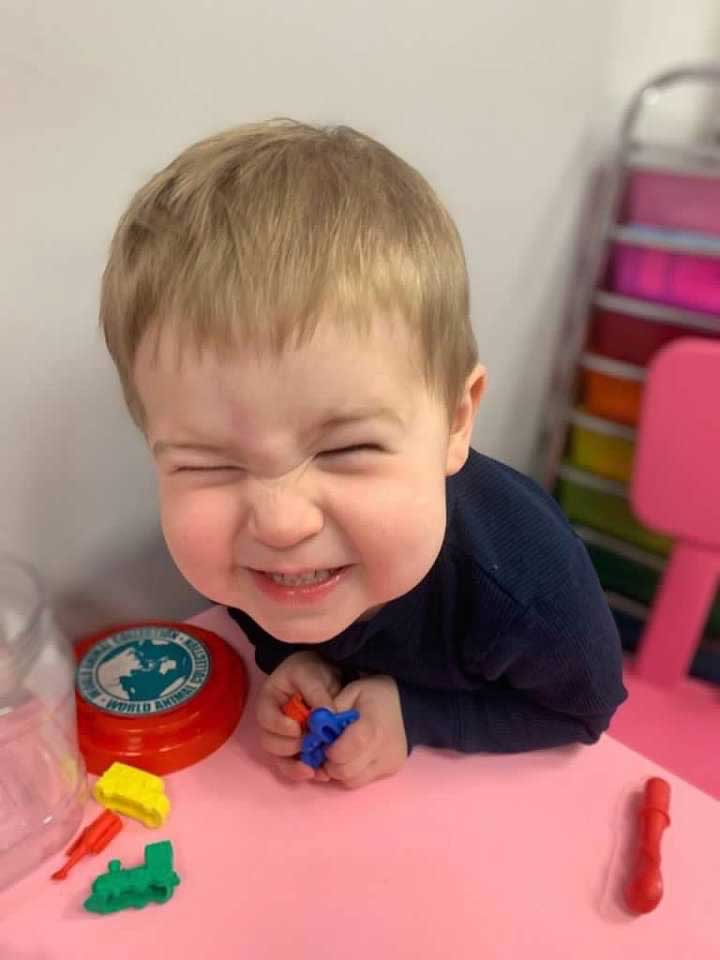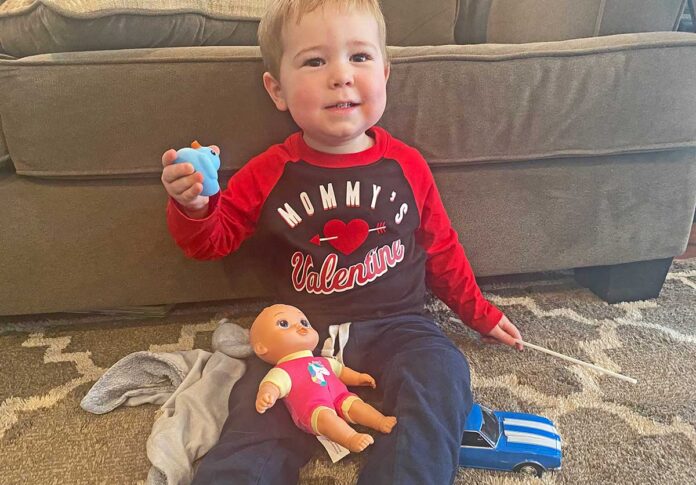As a two-mom family, Ashlee and I went into parenting thinking we’d be totally progressive and shun any gender norms or expectations for Jackson from the start. He wants to play with dolls? Cool. He hates the color blue? Awesome. He’d rather play with a My Little Pony than a monster truck? Whatever floats his boat. We painted his nursery a neutral gray and thought all it would take to raise a well-rounded kid comfortable with all types of gender expression would be our open minds.
But, gender norms are pretty hard to escape — and pretty easy to fall into a trap of reinforcing.
The sheer number of products new parents need for a baby is pretty alarming — washcloths, towels and blankets; clothes, socks and shoes; bottles when they’re little and cups, utensils and plates as they grow. That’s not even to mention the toys.
And all of it is gendered. Pretty much outside of diapers and wipes, whenever we have had to buy anything for Jackson, any store we visit steers us into the “boys” or “girls” aisle. Predictably, they’re brimming with blue or pink, trucks or dolls. As open-minded as we thought we’d be, we found ourselves falling into the commercialization of gender. When Jackson needed new onesies after one-too-many spit-ups or blowouts, we’d grab the pack of dark-colored bodysuits adorned with some type of vehicle. Or, when his water cup got a crack in it, we’d hop on Amazon and quick reorder the cup adorned with Mickey Mouse — not even thinking of Minnie or Daisy Duck.
That constant exposure to “boy” themed items and toys quickly becomes a cycle. Since birth, many of his clothing items had dinos, cars and trucks on them; the more he saw them, the more he would gravitate toward those types of toys or shriek for us to stop on dino and truck content on YouTube as we would scroll for a pre-bed TV show. The more he exhibited a love for all things with wheels, the more he’d get those toys for birthdays and Christmas — and on and on.
It’s a cycle I’ve certainly found myself perpetuating. Last summer, I started trying to acclimate Jackson to wearing his facemask by short trips to the grocery store where I’d admittedly bribe him with a new Hot Wheels car if he cooperated. (It scarily worked like a charm within one trip. The kid now loves his mask!) That trick has followed me and now every time we go to a store, he asks “Truck?” and I save our $1 vehicle purchase until the very end of our trip to ensure good behavior. But I recently found myself wondering if I was doing him a disservice by beelining right to the truck aisle — how can I expect him to be open to playing with “nontraditional” boy things if they’re never in front of him?
This idea was emphasized on one of our many recent snow days. Stuck inside while the snow was too fierce, I broke out a giant bean bag full of Jackson’s stuffed animals from our basement and whiled away time helping him jump from our couch into the pile. One miniature Cabbage Patch doll caught his eye and he begged me to let him take it to his nap with him — and thus, the doll has joined his growing hoard of stuffed animals who live in his crib. He calls her “Baby” and often sits her at his tiny table and pretends to feed her and gives her kisses on her head when he says she’s “sad.”
Jackson has always had this tender side; ever since he was very little, he has gravitated more toward the imaginative than the roughhousing (though that’s shifted a bit during these Terrible Twos!). Who knows if that tendency is part of his nature or, with two moms — who, ourselves, were conditioned under typical gender norms that may have contributed to our being sensitive and empathetic — that nurture aspect is also at play.

Regardless, Jackson should be able to play however and with whatever he’s inclined toward, which means we need to be doing more to empower him. He may be drawn to activities that allow him to be nurturing and creative, but when he only has trucks in front of him, what happens to that burgeoning side of his personality? I want him to one day be able to grasp the complexity of gender, and I think that starts with an early understanding that gender doesn’t define interests, abilities or temperaments.
So, on a recent trip to Walmart, when we headed to the toy section to reward him for a shopping trip well done, I pushed the cart first to the “girls’” toy aisle to see if anything caught his eye. Right away, he asked to get a miniature baby doll, so I obliged and bypassed the truck aisle on our way to check out. Admittedly, when we were about to ring up our items and Jackson realized he wasn’t also getting a truck, he lapsed into a hysterical, thrashing tantrum (breaking his multi-year streak of never having a full meltdown in a store!). I eventually had to leave the doll at the checkout station as a punishment for Jackson refusing to stop screaming (setting in motion an hour-long screamfest that had me opening a bottle of wine that night). And ever since, he’s been asking where “other baby” is (I went back to Walmart and got it days later as a Valentine’s Day gift).
While that experiment wasn’t necessarily smooth, it did show me that, when given the chance, Jackson can think outside the (figurative) toy box. I want to be more intentional about giving him that opportunity, and that idea can be pretty far-reaching: I’ve lately started trying to catch myself when I refer to his toys and animals while we’re playing predominantly as “he.” When talking about his friends from daycare, instead of asking about the “boys” and “girls,” I’m trying to ask instead what they look like, what kind of toys they like, what they did together that day.
Like nearly everything else with parenting, we’re finding that our early ideas about how we would introduce Jackson to gender look a little different in practice. As much as we want to teach him, we also need to continually learn ourselves — and sometimes Jackson is the best teacher.
